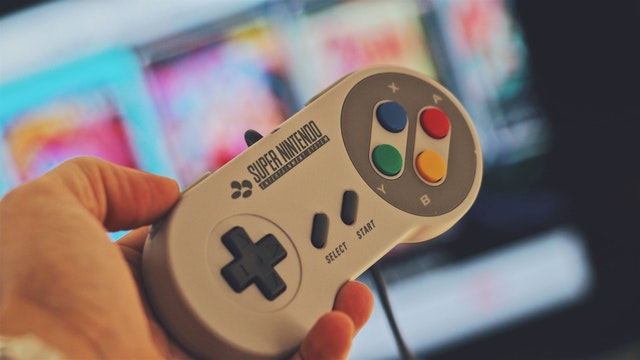Most people look back at games from a decade or two ago and shake their head at the outdated visuals and simple gameplay. Of course, who can blame them when you take into consideration just how far we’ve come from pixel graphics and chiptune music.
As a game developer, however, it is always important to check out classic games and analyze what made them stand out above the rest back in their day. You’d be surprised by how much we can learn from influential games of the past and use that knowledge to make better games today. Below are only a few of the many titles from gaming’s yesteryears that delivered memorable experiences by giving players something they didn’t know could be incredibly fun.

Pong
[Tweet “Game Design Tip: Make It Simple But Fun #GameDesign #VideoGames”]
Serving as the first commercially successful video game, 1972’s Pong blew everyone away with its simple take on tennis by consisting of only two lines to serve as paddles and a ball.
Atari’s game became such a hit in arcades that tons of other companies, including Nintendo themselves, delivered their own clones that ended up being the birth of the video game market.
Although it was too early to do anything more complicated, Pong is nonetheless a testament to the power of one key design principle: make something that anyone can pick up and enjoy.
Pac-Man
[Tweet “Game Design Tip: We Still Like High Scores #GameDesign #VideoGames”]
Only if you actually lived in the 1980s could you truly understand how popular Pac-Man became.
While other arcade games died off after the 1983 crash, the iconic yellow ghost-eater went on to transcend popular culture and appear on clothing, mainstream music, and more.
Although the addicting gameplay is why Pac-Man appeared in every arcade and pizza shop, it was the challenge of beating other high scores that brought you back time and time again. It may be all about gamerscore, trophy level, and Steam achievements these days but gamers have proven they still like showing off their high scores, especially in casual and social games.
Wolfenstein 3D
[Tweet “Game Design Tip: Shooting Things Feels Good #GameDesign #VideoGames”]
These days, you can find an FPS game no matter what platform you play on, including smartphones. However, it was id Software’s Wolfenstein 3D that fathered the genre that gamers would go crazy about. More importantly, it introduced new concepts such as a first-person view, holding several weapons, and even health packs.
If you ever find yourself designing a first-person shooter, make sure it offers something other FPS games don’t, while still having that satisfying shooting gameplay we all know and love.
Street Fighter II: The World Warrior
[Tweet “Game Design Tip: Gamers Like Competition #GameDesign #VideoGames”]
Despite being a quiet genre for a long time, there’s no denying the recent resurgence in fighting games lead by amazing game series like Street Fighter, Marvel vs Capcom, Mortal Kombat, and more.
However, it was Street Fighter II that, in 1991, introduced us to special moves, button-demanding combos, and other mechanics that led to the birth of competitive fighting.
Today, we even have huge fighting game events like Evolution Championship Series and Apex that bring in thousands of players, many from other countries.
If you’re ever design a multiplayer game, be it fighting or a different genre, know that players enjoy being rewarded for their skill.
Alone in the Dark
[Tweet “Game Design Tip: Make A Captivating Atmosphere #GameDesign #VideoGames”]
Although most gamers today would say that survival horror started with Capcom’s Resident Evil, it was actually Alone in the Dark that had gamers on the edge of their seats in 1992.
This was the first time we explored a strange 3D mansion in fixed camera perspectives, which only made running away from undead creatures all the more intense.
Before Alone in the Dark, few could have predicted just how effective the idea of “scaring” your player would be in delivering a captivating experience.
Metal Gear Solid
[Tweet “Game Design Tip: Cinematic Storytelling + Addicting Gameplay = Happy gamers #GameDesign #VideoGames”]
Even though the series actually started on the NES, it was the PlayStation title that blew gamers away with an over-the-top story full of government conspiracies, unbelievable villains, and unique weapons. It also helped that the lead character was Solid Snake, a “tough guy” protagonist that became more interesting as we watched him interact with various other allies and foes.
Even though most will argue that gameplay should always come first before the story, it’s not a bad idea to make sure you’re designing a game where both will work together to provide an unforgettable gaming experience.
Super Mario Bros.
[Tweet “Game Design Tip: It Should All Come Together #GameDesign #VideoGames”]
If there’s one thing we can learn from arguably one of the most influential games in the history of this industry, it’s that everything matters.
Super Mario Bros. stood out in 1986 for so many reasons, including having catchy music we still hum today, a colorful art style, and a certain mustachioed Italian who was memorable enough to become the face of Nintendo.
Of course, the fast-paced side-scrolling gameplay is what makes us return to this game even today. So, take a lesson from Super Mario Bros. and design your game so that all the pieces fit together into a perfect package that will have players craving more.
